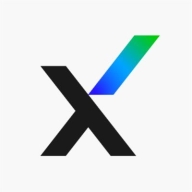


Trellix Cloud Workload Security and Microsoft Defender for Cloud compete in the cloud security market. Microsoft Defender for Cloud is often seen as the superior product due to its comprehensive features, while Trellix Cloud Workload Security is valued for pricing and support.
Features: Trellix Cloud Workload Security includes robust threat intelligence, workload protection, and pricing advantages. Microsoft Defender for Cloud provides advanced threat detection, integration with Microsoft services, and automation capabilities.
Ease of Deployment and Customer Service: Trellix Cloud Workload Security is known for straightforward deployment and responsive support. Microsoft Defender for Cloud offers seamless deployment and extensive documentation within the Microsoft ecosystem, assisting users familiar with Microsoft technologies.
Pricing and ROI: Trellix Cloud Workload Security has competitive pricing and delivers solid ROI for cost-conscious companies. Microsoft Defender for Cloud, with potentially higher setup costs, provides greater long-term value from its features and integration benefits, appealing to those seeking comprehensive solutions.



SentinelOne Singularity Cloud Security protects cloud workloads, offering advanced threat detection and automated response. It integrates seamlessly with cloud environments and secures containerized applications and virtual machines against vulnerabilities.
SentinelOne Singularity Cloud Security is renowned for its efficiency in mitigating threats in real-time. The platform integrates effortlessly with existing cloud environments, ensuring robust cloud security management with minimal manual intervention. Securing containerized applications and virtual machines, it excels in threat intelligence and endpoint protection. However, improvements are needed in performance during high workload periods, and more integrations with third-party tools and better documentation would be beneficial. Users often find the installation process complex, support response times slow, and the dashboard's navigation unintuitive.
What are the key features of SentinelOne Singularity Cloud Security?In specific industries, SentinelOne Singularity Cloud Security is implemented to safeguard critical data and infrastructure. Organizations in finance, healthcare, and technology depend on its real-time threat detection and automated response to protect sensitive information. Its ability to secure containerized applications and virtual machines is particularly valuable in dynamic environments where rapid scaling is necessary.
Microsoft Defender for Cloud is a comprehensive security solution that provides advanced threat protection for cloud workloads. It offers real-time visibility into the security posture of cloud environments, enabling organizations to quickly identify and respond to potential threats. With its advanced machine learning capabilities, Microsoft Defender for Cloud can detect and block sophisticated attacks, including zero-day exploits and fileless malware.
The solution also provides automated remediation capabilities, allowing security teams to quickly and easily respond to security incidents. With Microsoft Defender for Cloud, organizations can ensure the security and compliance of their cloud workloads, while reducing the burden on their security teams.
Trellix Cloud Workload Security is a comprehensive security solution designed to protect cloud workloads from advanced threats. It provides real-time visibility and control over cloud workloads, enabling organizations to quickly detect and respond to threats.
The most useful functionality of the solution includes automated threat detection, continuous compliance monitoring, and workload protection. With these features, organizations can ensure their cloud workloads are secure and compliant with industry regulations. Trellix Cloud Workload Security helps organizations reduce the risk of data breaches, protect sensitive data, and ensure compliance with regulatory requirements.
We monitor all Cloud Workload Protection Platforms (CWPP) reviews to prevent fraudulent reviews and keep review quality high. We do not post reviews by company employees or direct competitors. We validate each review for authenticity via cross-reference with LinkedIn, and personal follow-up with the reviewer when necessary.